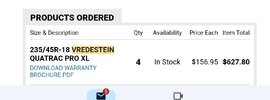Low-Rolling-Resistance Tires Can Save You Money at the Pump lists a bunch of tires by rolling resistance.
Unfortunately, it does not include some tires commonly discussed here, like the OEM Michelin Primacy MXM4 or Hankook Kinergy GT, or commonly asked about aftermarket tires like the Pirelli PZero ELECT. However, the tires listed are mostly in the same general market class as the Michelin Primacy MXM4 (i.e. less sporty than Michelin Pilot tires, but more sporty than Michelin Defender or Energy Saver tires).
It does show the Michelin CrossClimate 2 and Vredestein Quatrac Pro near the bottom of the listing, in contrast to their predecessors Michelin CrossClimate+ and Vredestein Quatrac 5 that were at the top of the listing the previous time the had this kind of list (the Vredestein Quatrac 5 was the lowest rolling resistance tire in the previous list).
Unfortunately, it does not include some tires commonly discussed here, like the OEM Michelin Primacy MXM4 or Hankook Kinergy GT, or commonly asked about aftermarket tires like the Pirelli PZero ELECT. However, the tires listed are mostly in the same general market class as the Michelin Primacy MXM4 (i.e. less sporty than Michelin Pilot tires, but more sporty than Michelin Defender or Energy Saver tires).
It does show the Michelin CrossClimate 2 and Vredestein Quatrac Pro near the bottom of the listing, in contrast to their predecessors Michelin CrossClimate+ and Vredestein Quatrac 5 that were at the top of the listing the previous time the had this kind of list (the Vredestein Quatrac 5 was the lowest rolling resistance tire in the previous list).



